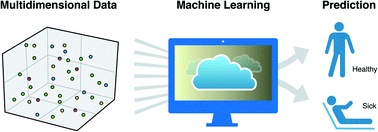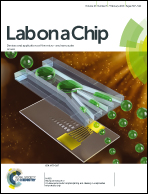Machine learning to detect signatures of disease in liquid biopsies – a user's guide
Abstract
New technologies that measure sparse molecular biomarkers from easily accessible bodily fluids (e.g. blood, urine, and saliva) are revolutionizing disease diagnostics and precision medicine. Microchip devices can measure more disease biomarkers with better sensitivity and specificity each year, but clinical interpretation of these biomarkers remains a challenge. Single biomarkers in ‘liquid biopsy’ often cannot accurately predict the state of a disease due to heterogeneity in phenotype and disease expression across individuals. To address this challenge, investigators are combining multiplexed measurements of different biomarkers that together define robust signatures for specific disease states. Machine learning is a useful tool to automatically discover and detect these signatures, especially as new technologies output increasing quantities of molecular data. In this paper, we review the state of the field of machine learning applied to molecular diagnostics and provide practical guidance to use this tool effectively and to avoid common pitfalls.

- This article is part of the themed collections: Personalised Medicine: Liquid Biopsy and Lab on a Chip Recent Review Articles


 Please wait while we load your content...
Please wait while we load your content...